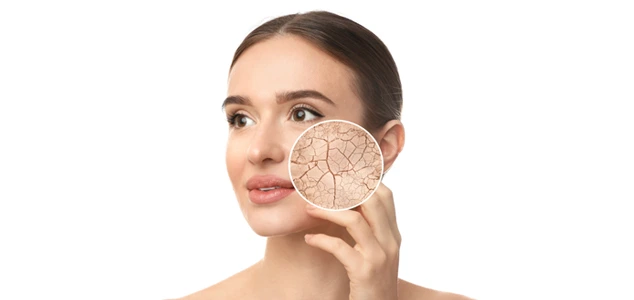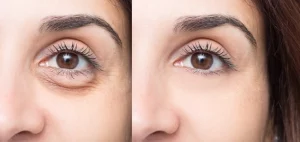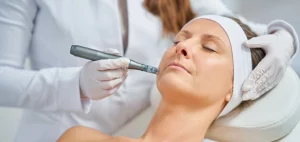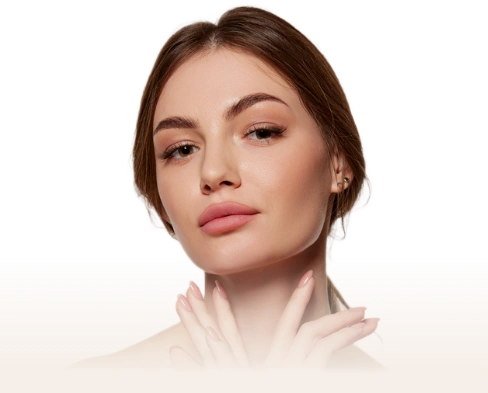While smooth skin is a common aspiration for all, it is important to understand that having uneven skin texture is completely normal. It varies for each individual and mainly depends on how one describes smooth skin, in order to decide whether or not to treat the skin – as textured skin, caused by enlarged pores and bumps, can result in an unpleasant appearance.
Learn with Dr. Syra – what textured skin actually is and how to smoothen the skin texture on the face.
What is Textured Skin?
Textured skin can be defined as the uneven and elevated aspect of skin, which is most commonly seen on the face and may feel rough, dry, or bumpy when touched. This texture is usually caused due to increased pores, acne, or acne scars.
It includes a variety of defects such as bumps, rough patches, and enlarged pores, which contribute to a less smooth and luminous complexion. Further, textured skin may show signs of discolouration or redness, emphasizing its uneven appearance.
Textured Skin Causes
Textured skin can have various causes, which vary depending on where it appears on your body.
The most common of these causes include:
Aging:
The natural process of aging leads to a reduction in skin firmness as elastin production decreases, resulting in an irregular texture.
Dryness:
Conditions such as psoriasis or keratosis pilaris (KP) can induce dryness in the skin, causing it to feel rough to the touch and exhibit a flaky appearance, ultimately giving it a textured look.
Acne Scarring:
Severe pimples can leave behind uneven scars on the skin, contributing to an uneven skin texture.
Sun Exposure:
Prolonged exposure to UV rays can lead to collagen degradation in the skin, diminishing its elasticity. Sunburn can further exacerbate this effect, causing the skin to appear rough and dry.
Genetics:
Your genetic makeup plays a significant role in determining your skin’s texture and overall appearance. If your parents or grandparents had larger pores or uneven skin texture, you are more likely to inherit these traits.
Skin Conditions:
Skin disorders like rosacea, psoriasis, and eczema can result in dryness and a rough, uneven skin texture.
How to Smooth Skin Texture on the Face?
Non-surgical options are often the best choice for improving skin texture on the face, as they are minimally invasive and require little to no downtime. Treatments like fillers and microneedling stimulate collagen production and promote smoother skin without surgery’s risks or recovery period. They offer effective and convenient solutions for addressing uneven texture and bumpy skin, catering to a wide range of cosmetic concerns.
Microneedling
Microneedling is a cosmetic procedure that smooths textured skin by creating controlled micro-injuries with fine needles, stimulating the skin’s natural healing response. This process triggers increased collagen and elastin production, leading to the regeneration of skin tissue and a reduction in the appearance of scars, fine lines, and uneven texture, resulting in smoother and more youthful-looking skin. Also, microneedling can help with bumps on the face by promoting skin cell turnover, which can improve the overall texture and minimize the appearance of bumpy or rough areas, such as those caused by conditions like keratosis pilaris or acne.
Fillers:
Fillers can help smooth textured skin by adding volume and filling in uneven areas on the face. They are particularly effective in reducing the appearance of scars, fine lines, and wrinkles. By providing support and plumpness to the skin’s surface, fillers can create a smoother and more even skin texture, making bumps and irregularities less noticeable. This non-surgical option offers temporary results, enhancing facial contours and improving overall skin appearance without the need for invasive procedures.
Conclusion
Textured skin is a common occurrence with various causes, and while it may be bothersome for some due to its less-than-ideal appearance, there are effective non-surgical treatments such as microneedling and fillers that provide scar-free solutions for smoothing rough and bumpy skin.
For personalized guidance, consider booking an appointment with Dr. Syra Hanif at her Med Spa in Manhattan, NYC.

About The Author
Dr. Syra Hanif M.D.
Board Certified Primary Care Physician
Dr. Hanif is the Director of Aesthetic Medicine. She is a board-certified physician in Aesthetic Medicine who specializes in using non-surgical alternatives in order to enhance one's appearance through Botox and fillers.
Read More











